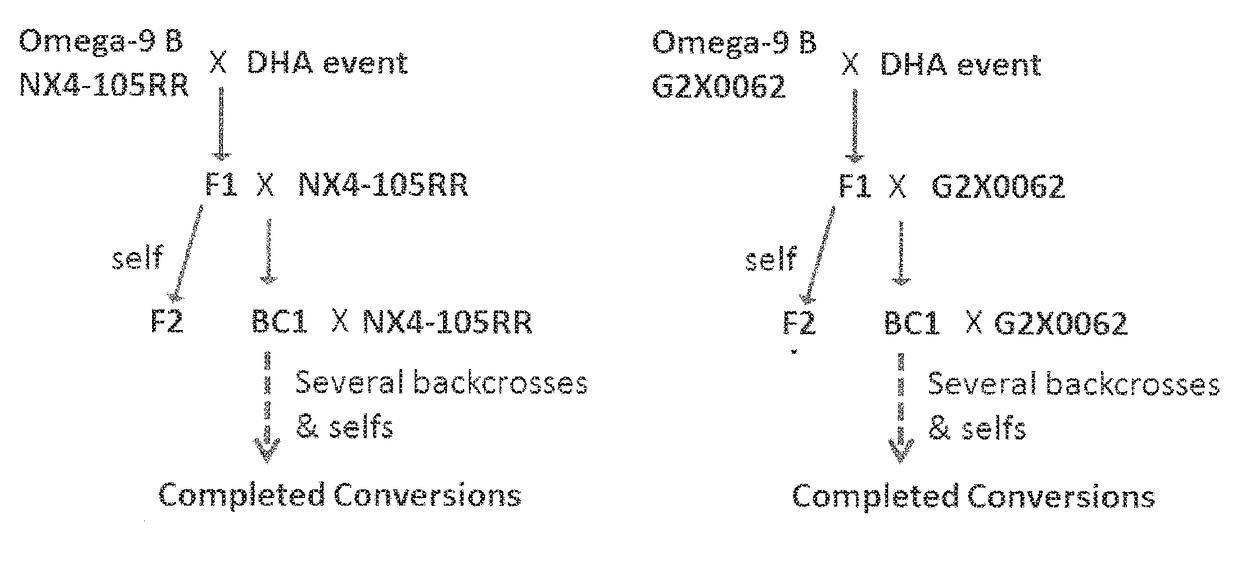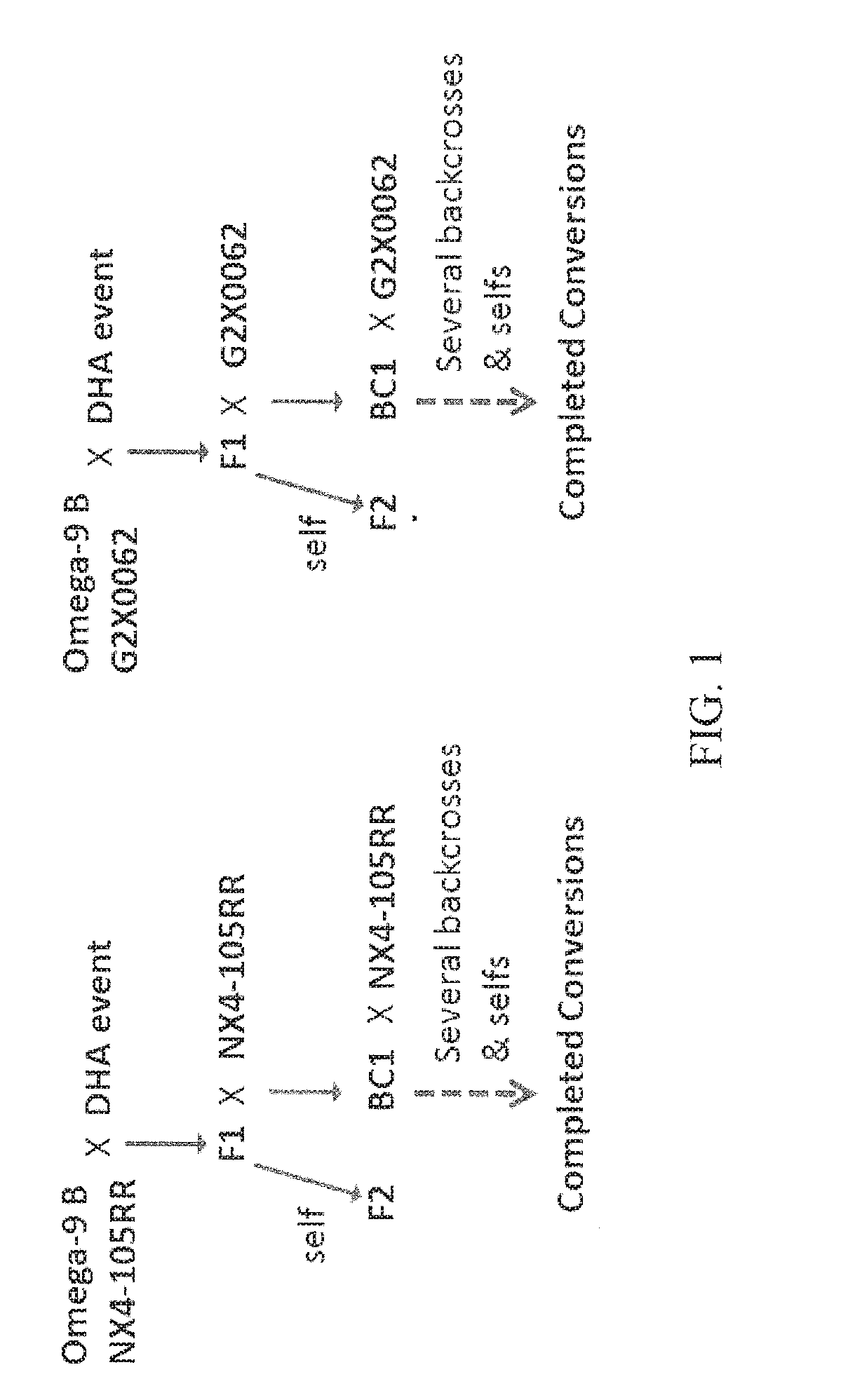Methods and systems using ftir for plant trait detection and trait introgression
a technology of plant traits and fatty acid profiles, applied in the field of methods and systems using ftir for plant trait detection and trait introgression, can solve the problems of inability to high-throughput screening of seeds, time-consuming methods, and laborious and time-consuming to determine the fatty acid profiles of a seed population, so as to save time, maintain seed integrity, and save costs
- Summary
- Abstract
- Description
- Claims
- Application Information
AI Technical Summary
Benefits of technology
Problems solved by technology
Method used
Image
Examples
example 1
[0047]FTIR mode of operations—Canola (Brassica napus) seeds are placed in a custom designed 96 microtiter plates. The plate material is made of non-reflective metal alloy with indentations to contain the round seed. The loaded plates are then introduced into a Bruker Fourier Transform Infra Red (FTIR) instrument comprising a Vertex Tensor 27 equipped with a HTS-XT plate reader. The MCT (model 316) detector is cooled using liquid nitrogen and the intensity of a total reflective surface (gold target) is used to calibrate the system.
[0048]The FTIR scans are conducted in the wavenumber range between 7500 cm−1 and 600 cm−1 with a resolution of 8 cm−1 and a mirror velocity of 20 KHz. Thirty two successive scans are acquired and the average per sample is used for the chemometric prediction. The system is controlled by OPUS 7.0 software. The calibration model is built in OPUS using Quant 2 workflow. A first derivative with 17 smoothing points and multiplicative scattering correction (MSC) a...
example 2
[0052]Crossings are performed between DHA transgenic event 035 (homozygous T2 plant) as the male parent and Omega-9 materials as the female parents (NX4-105RR or G2X0062) as illustrated in FIG. 1. Crossings are performed between DHA transgenic event 035 (homozygous T2 plant) as the male parent and Dow AgroSciences Omega-9 materials as the female parents (DAS Omega-9 commercial variety NX4-105RR or DAS Omega-9 canola inbred G2X0062). G2X0062 inbred has been described in U.S. Pat. Nos. 8,558,065 and 8,530,726. DHA transgenic event 035 has been described in international patent application publication WO 2015 / 081270.
[0053]Fourier Transform Infra Red (FTIR) scanned is performed as set forth in Example 1 and such FTIR results show that the DHA trait in the F1 behaves as semi-dominant as compared to both the parents and all F1's are hemizygous for the DHA trait as expected. Accordingly, FTIR results are used to predict trait genetics and DHA seed selections of F1 harvested seeds before pl...
PUM
| Property | Measurement | Unit |
|---|---|---|
| wavenumber | aaaaa | aaaaa |
| wavenumber | aaaaa | aaaaa |
| wavenumber | aaaaa | aaaaa |
Abstract
Description
Claims
Application Information
 Login to View More
Login to View More - R&D
- Intellectual Property
- Life Sciences
- Materials
- Tech Scout
- Unparalleled Data Quality
- Higher Quality Content
- 60% Fewer Hallucinations
Browse by: Latest US Patents, China's latest patents, Technical Efficacy Thesaurus, Application Domain, Technology Topic, Popular Technical Reports.
© 2025 PatSnap. All rights reserved.Legal|Privacy policy|Modern Slavery Act Transparency Statement|Sitemap|About US| Contact US: help@patsnap.com



